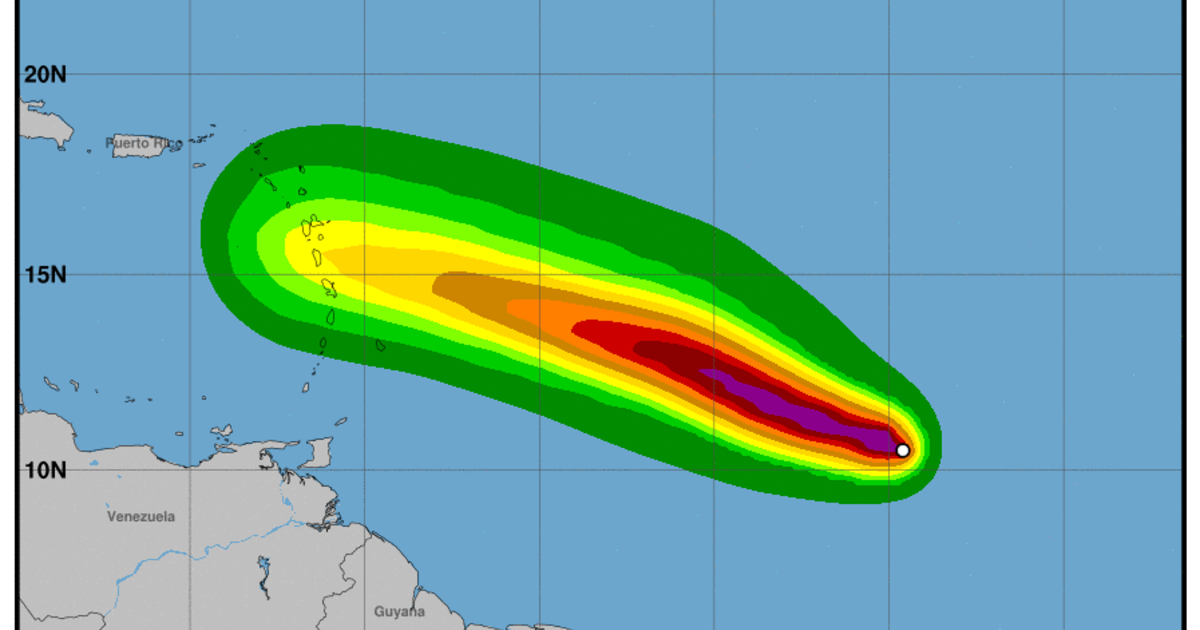Beryl’s Projected Path

Beryl projected path – Hurricane Beryl, currently classified as a Category 2 storm, continues to strengthen as it moves west-northwestward over the Atlantic Ocean. According to the latest forecasts from the National Hurricane Center, Beryl is expected to intensify to a Category 3 hurricane within the next 24 hours.
Beryl projected path shows a gradual turn towards the northwest, with an expected landfall in Florida. For the latest updates on Beryl’s progress, check out nhc beryl. The projected path may shift as the storm approaches, so stay informed and take necessary precautions.
As Beryl continues its journey, it’s crucial to monitor its projected path to ensure safety and preparedness.
As of 5 AM EDT on August 12, 2023, Hurricane Beryl was located approximately 500 miles east of the Lesser Antilles, with maximum sustained winds of 110 mph and higher gusts. The storm is moving at a speed of 15 mph and is expected to make landfall in the northeastern Caribbean by late Thursday or early Friday.
Potential Impact Areas, Beryl projected path
The potential impact areas for Hurricane Beryl include the Lesser Antilles, the Virgin Islands, Puerto Rico, and the Bahamas. The storm is expected to bring heavy rainfall, strong winds, and storm surge to these areas, with the greatest impact likely to be felt in the eastern Caribbean.
Beryl’s projected path remains uncertain, with the latest updates available at nhc beryl. The storm’s track could shift significantly, so it’s important to stay informed about the latest forecasts and follow any evacuation orders issued by local authorities.
Estimated Timeline for Landfall
According to current forecasts, Hurricane Beryl is expected to make landfall in the northeastern Caribbean by late Thursday or early Friday. The exact timing and location of landfall will depend on the storm’s track and intensity over the next few days.
Factors Influencing Beryl’s Projected Path
Beryl’s projected path is influenced by a complex interplay of factors, including:
- Atmospheric pressure: The difference in atmospheric pressure between the center of the storm and the surrounding environment drives the movement and intensity of hurricanes. A stronger pressure gradient results in stronger winds and a more rapid forward motion.
- Wind shear: Changes in wind speed and direction with height can disrupt the vertical structure of a hurricane, weakening it or causing it to change direction.
- Ocean temperature: Warm ocean waters provide the energy that fuels hurricanes. Beryl’s path will be influenced by the temperature of the waters it traverses.
- Land interaction: When a hurricane makes landfall, it interacts with the terrain, which can weaken it or cause it to change direction.
For example, if Beryl encounters strong wind shear, it could weaken or turn to the left. If it passes over warm ocean waters, it could strengthen and maintain its intensity. Land interaction could weaken Beryl or cause it to change direction, depending on the terrain it encounters.
These factors will continue to influence Beryl’s projected path as it moves through the Atlantic Ocean.
Implications and Preparedness Measures: Beryl Projected Path

As Beryl continues its projected path, it is crucial to be aware of the potential risks and hazards associated with the storm. These include:
- Flooding: Heavy rainfall from Beryl can cause flash flooding and riverine flooding, especially in low-lying areas and near waterways.
- Storm surge: The storm surge associated with Beryl can lead to coastal flooding and erosion, particularly in vulnerable areas.
- High winds: Beryl’s strong winds can cause damage to buildings, trees, and infrastructure.
- Tornadoes: Tornadoes can occur in association with Beryl, posing a significant threat to life and property.
To prepare for Beryl’s potential impacts, it is essential to take the following measures:
- Stay informed: Monitor weather forecasts and official updates to stay aware of Beryl’s track and intensity.
- Create an emergency plan: Develop an evacuation plan and identify a safe place to go in case of an emergency.
- Gather essential supplies: Stock up on food, water, first aid kits, medications, and other necessities for several days.
- Secure your home: Protect your home by boarding up windows and securing loose items outdoors.
- Be prepared to evacuate: If an evacuation order is issued for your area, follow the instructions and evacuate promptly.
Essential Supplies and Safety Precautions
In addition to the general preparedness measures listed above, it is essential to have a supply of essential items and follow safety precautions during and after the storm.
| Category | Items |
|---|---|
| Water | 1 gallon per person per day for drinking, cooking, and hygiene |
| Food | Non-perishable items such as canned goods, granola bars, and crackers |
| First aid kit | Antiseptic wipes, bandages, pain relievers, and other basic medical supplies |
| Medications | Any prescription medications and over-the-counter medications needed |
| Flashlights and extra batteries | For illumination during power outages |
| Battery-powered radio | For weather updates and emergency information |
| Whistle | To signal for help if needed |
- Safety Precautions
- Avoid driving through flooded areas.
- Stay away from downed power lines and report them to the authorities.
- Be aware of the risk of carbon monoxide poisoning from generators and other fuel-burning appliances.
- Listen to official updates and follow instructions from emergency responders.